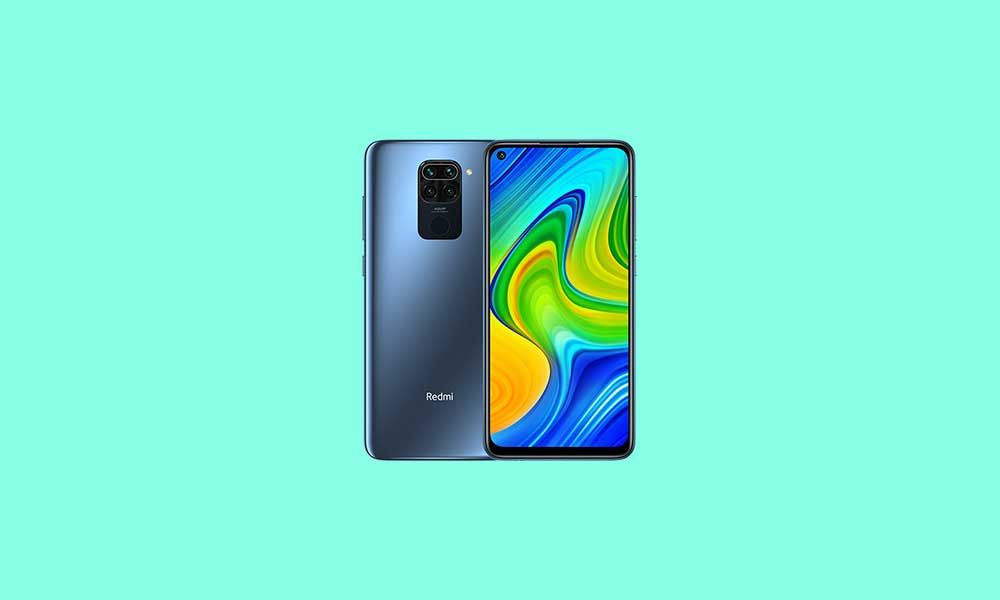Last year in early 2020, Xiaomi has released the Redmi Note 9 which is still one of the most popular budget segment smartphones in the market. It came with Android 10 (MIUI 12) out of the box and equipped with a MediaTek Helio G85 SoC which is good enough for handling daily tasks. Now, if you’re stuck into the bootloop issue or bricked your handset then you can follow this guide to easily Unbrick Restore Xiaomi Redmi Note 9 from Dead or Bootloop.
Mostly the device is stuck in the bootloop or gets bricked due to improper firmware flashing method or incompatible flash file or even if someone fails to perform any specific action while flashing the third-party firmware file on the Android device. Well, if you’re a Xiaomi Redmi Note 9 user and going through the same issue then we’ll definitely help you out of it. A big thanks to VD171 (XDA Senior Member) for sharing additional methods.

Page Contents
How to Unbrick Xiaomi Redmi Note 9?
Before heading over to the method, make sure to follow all the requirements properly to avoid any kind of further issues with your handset. If you’re trying to flash the misc.bin file, then your device can be stuck in bootloop forever.
Pre-Requisites:
Make sure to read and perform all the requirements mentioned below apart from downloading & installing tools/drivers/files accordingly.
1. You Need a PC or Laptop and a USB cable
First of all, you’ll require a Windows desktop/laptop and a USB cable to easily connect your Redmi Note 9 handset with the computer. It’s necessary.
2. Charge Your Phone
Make sure to charge your device battery sufficiently (more than 50%) to avoid any kind of occasional shut down during the unbricking process.
3. Download Unbrick Firmware
Visit this link to get a full list of Redmi Note 9 Stock ROM depending on the region variant. Just download the latest one according to the variant.
4. Download ADB and Fastboot Binaries
You can grab ADB and Fastboot binaries here. ADB and Fastboot drivers or tools are used to perform adb or fastboot commands on the connected Android device for removing system apps, flashing firmware files, etc.
5. Download Xiaomi USB Drivers
Make sure to download the Xiaomi USB driver and then install it properly on your computer. A USB driver is always required to easily connect to a handset with the computer for a successful data transfer or flashing files, etc.
Instructions to Restore Your Redmi Note 9:
Disclaimer: GetDroidTips won’t be held responsible for any kind of issue that may happen on your device. You’ll be only responsible for what you’re doing.
There are a couple of methods to easily unbrick or restore your Redmi Note 9 handset. You can perform any one of these. Just head over to this in-depth guide on how to flash stock firmware on a Xiaomi Redmi device.
However, if you’re facing issues with the misc.bin partition or black screen issue such as if you’ve flashed the misc.bin partition by using an outdated TWRP recovery on your handset then you may encounter a black screen (bricked/bootloop) status. In such a scenario, there are two ways to fix the bricked or bootloop status on your Redmi Note 9 device easily.
Method 1:
Note: If you execute this command wrong, you will ERASE any other partition and it can brick your device forever and cause more damages.
- Once your device is on the black screen, plug it on USB (try USB3.0 first) with the computer.
- Make sure that the connected device is detected in the ADB Recovery mode.
- Now, open Command Prompt inside the Platform Tools folder and run the following command: [If not, make sure to reinstall the USB driver and properly follow the Platform Tools method]
adb devices
- Once your device appears in the ADB Recovery Mode, you’ll have to erase the misc partition by running the following command:
dd if=/dev/zero of=/dev/block/mmcblk0p2
- Once done, you can reboot your device to the system or fastboot again according to your preference.
Method 2:
- Once your device is on the black screen, plug it on USB (try USB3.0 first) with the computer.
- Then check if it is detected in adb recovery mode by running the following command:
adb devices
- Next, you’ll have to reboot the device in the bootloader mode by running the command below:
adb reboot bootloader
- Once done, check if it is detected in fastboot mode or not by executing the following command:
fastboot devices
- So, if you can see your device is detected in the fastboot mode, then you’ll have to erase the misc partition by running the command below:
fastboot erase misc
Note: If you try to format the misc partition, you’ll get this error: Formatting is not supported for a file system with the type ‘raw data’.
- So, do not format the misc partition. Once done, you can reboot your device to the system or fastboot again according to your preference.
- You’re done.
Conclusion
This is how you can easily unbrick or restore your bricked/bootloop Xiaomi Redmi Note 9 device. Once you restored your handset and boot into the system, it may take some time to boot for the first attempt. So, have some patience until it boots up. If you’ve any other issues with the black screen or bootloop or even Misc partition then you can head over to the XDA forum link below.
Via: XDA
